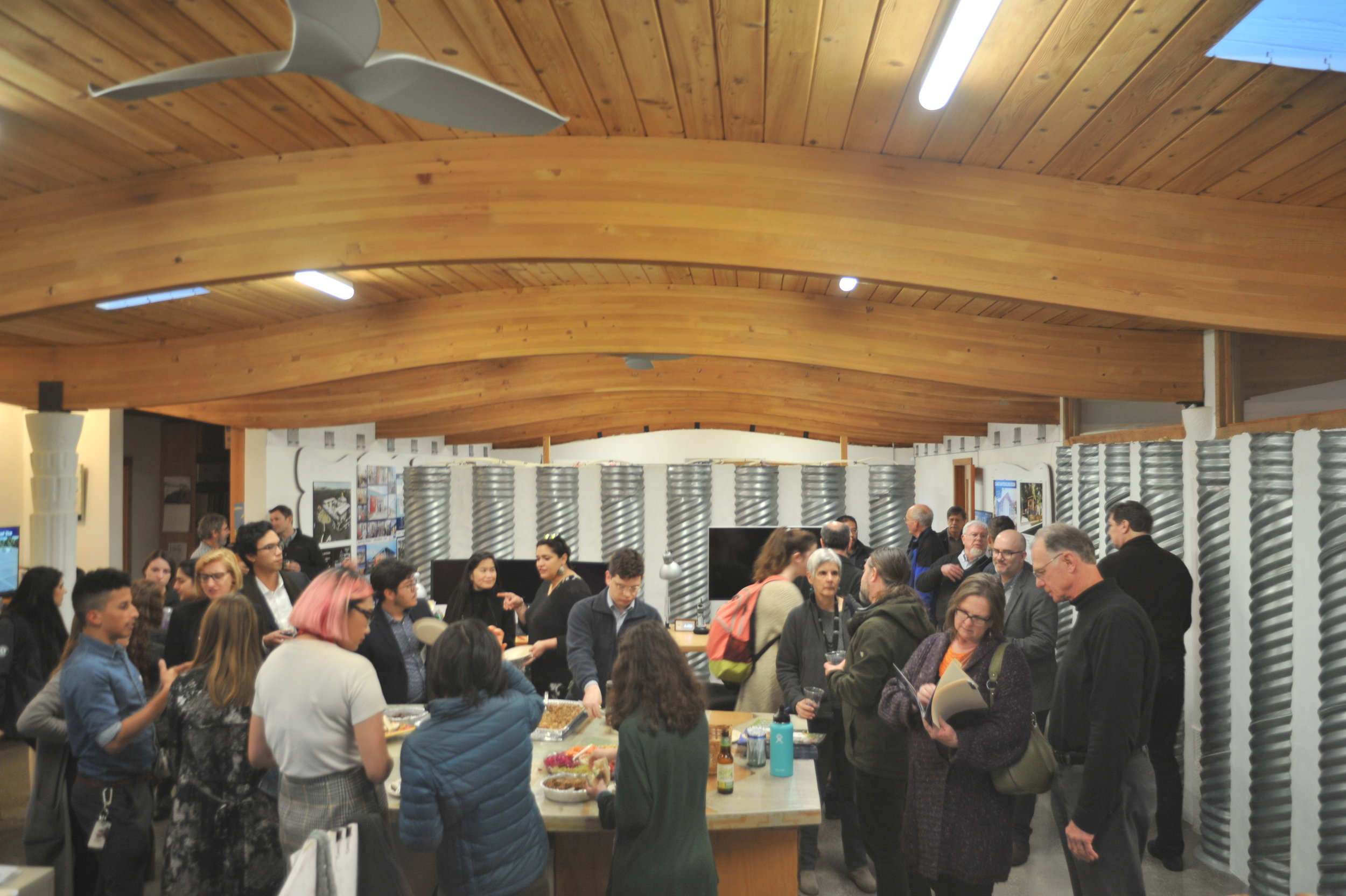Indigo Hosts Reception for the Climate Readiness Collaborative
One of Indigo’s Principal Architects Bruce Playle, explains how their Office uses passive and active solar strategies to achieve Zero-Net Energy. Indigo’s Office won the Innovation Award from the U.S. Green Building Council and was officially certified “Zero Energy” by the International Living Future Institute (ILFI) in 2018.
The Capital Region’s Climate Readiness Collaborative held their Sacramento Valley Regional Climate Symposium at UC Davis on Wednesday night. After a full day of discussing climate action, participants we invited to a reception and a science-to-action demonstration of climate resiliency at Indigo Architect’s award-winning zero-net-energy office. About 60 attendees of the symposium attended the complimentary reception and took a tour of Indigo Architect’s award winning office at 909 5th Street.
The tour highlighted Indigo’s unique methodology toward designing Zero-Net Energy buildings, including the large water filled columns that help to passively heat and cool the building. The tour also showed that Indigo didn’t sacrifice aesthetics for the sustainability features of the roughly 4,000-square-foot building and adding to the green theme, they used local, recycled, and renewable materials whenever possible.
The symposium discussed the latest International Panel on Climate Change’s (IPCC) Fifth Assessment Report. It confirms the necessity for immediate and sustained action on climate change, detailing how close we are to a turning point in the earth’s climate system. The underlying conclusion of the report is that we must stop burning fossil fuels, aiming for a complete phase-out by around 2050 (The Climate Reality Project). One key way to do that is to reduce and ultimately phase out the CO2 emissions produced by the building sector by transforming the way buildings are designed, built, and operated. This fact led former Gov. Jerry Brown to mandate that all California state owned buildings must be Zero-Net Energy (ZNE) by 2025.
As the climate continues to change, there will be more extreme summers and winters. Old, inefficient buildings will take more and more energy to heat and cool, increasing the amount of fossil fuels needs to keep the interior climates at a livable temperature. The building sector already creates almost half (44.6%) of the CO2 emissions in the United States. By comparison, all of transportation in the United States accounted for only 34.3% of CO2 emissions in 2017. (Architecture 2030) With this knowledge, Indigo has focused their designs to create climate-adapted, Zero-Net Energy Buildings. By manipulating sunlight, wind, and building materials, their buildings remain functional and comfortable for occupants, while using the least amount of energy as possible.
On the tour, Jon Hammond, a Principal Architect at Indigo explained, “We take energy from the outside environment and bring it into the building, whether it’s cooling energy or heating energy... We work from the understanding that earth’s systems are powered by sunlight, it’s also one of the most beautiful and powerful materials available to architects. Unlike wood, steel, and concrete, the supply of sunlight is free and boundless. Natural light provides building users with superior visual acuity, a sense of psychological well being, and dramatic energy savings. By using the power of nature keep our buildings naturally climate controlled, we can not only create a sustainable building but also a beautiful environment in which to live or work.”
Roughly 60 people attended the reception and toured Indigo’s Office to learn more about sustainably deigned buildings.


